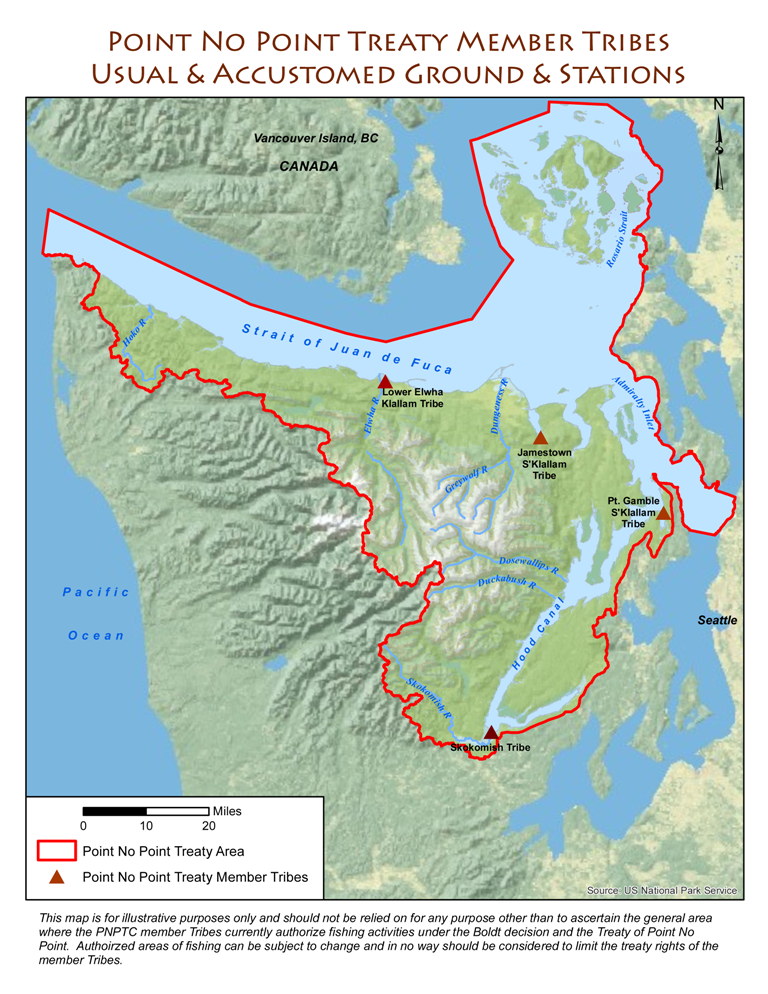
Treaty Rights & Resources
History of Treaties Between the Tribes and the United States
A treaty is a formal, written agreement between sovereign nations. In 1855, Tribes on the Straits of Juan de Fuca and Hood Canal, as sovereign nations, entered into an agreement with the United States and signed the Point No Point Treaty relinquishing their land but retaining the existing “right of taking fish at the usual and accustomed grounds and stations” as well as “the privilege of hunting and gathering roots and berries on open and unclaimed lands.”
The Jamestown Tribe ceded millions of acres of land to the government while reserving the rights to natural resources on that land and in local waters, including both surface and ground water resources. Water rights are included in the property rights retained by treaty. Today we share these resources with other Tribes and the State of Washington.


